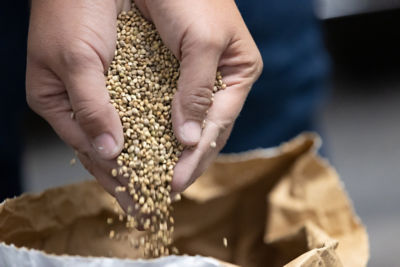
Preventative measures are key to containing the ToBRFV virus*

Examples of best practices of prevention strategies for employees and visitors
Do not allow employees and visitors to bring tomatoes or peppers on site.
Wash hands with water and soap before entering the glasshouse.
Have at least one hygiene lock before entering the glasshouse.


All employees should wear company clothing which should be washed daily after use. Employee working shoes should not leave the company and should not be used in different glasshouses/crops.
Have one working direction in your glasshouse, and do not work in multiple glasshouses in one day.
Limit the number of visitors to your company. Ensure they always wear protection gear.

Prevent phone usage by employees/visitors. Ensure phones are in disposable plastic covers.
No jewelry or watches should be worn inside the glasshouse, and glasses should be cleaned before entering the glasshouse.
External workers (for instance, mechanics) should wear clothing issued on-site during work (not their own).
Prevent usage of external tools. If it’s necessary to use their own tools, these should be disinfected before use.


Create ToBRFV awareness with employees
Educate them in recognizing ToBRFV symptoms (marbling of leaves, discolored fruits, vigor loss in heads).
Emphasize impact (additional costs, clear job expectations, and increased hygiene measures).

Prevention methods for equipment
Each glasshouse should have its own toolbox for maintenance, which should be disinfected after each use.
Mats with disinfection solution should be placed at doors for entering and leaving outside and inside between compartments.
Limit the exchange of materials and equipment between compartments as much as possible.
Use only one knife per gutter and disinfect after usage.
In case materials and equipment are exchanged, disinfect them before entering another compartment.
Use only one pair of gloves per path and throw them away after usage in designated bins.
*These recommendations should be considered as one reference point and should not be substituted for individual assessment of such industry guidelines and best practices, along with the professional opinion of relevant experts evaluating specific circumstances.



